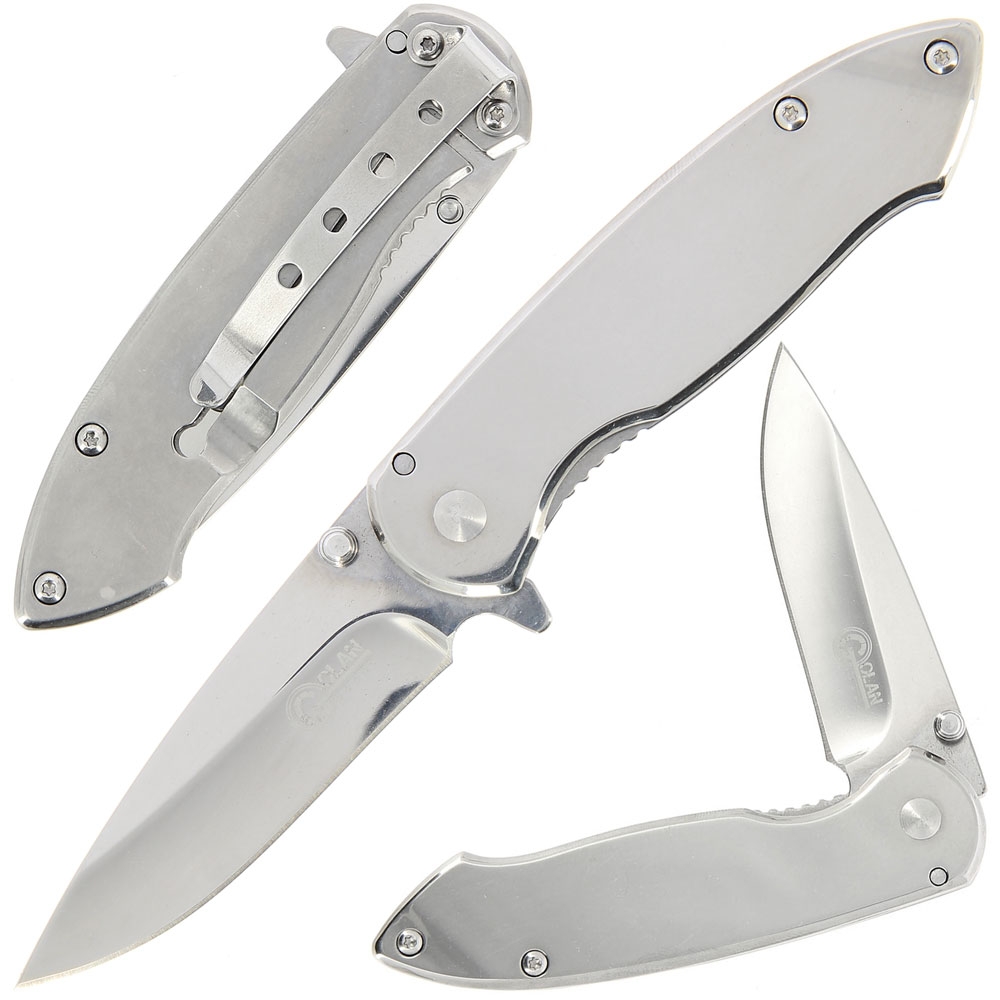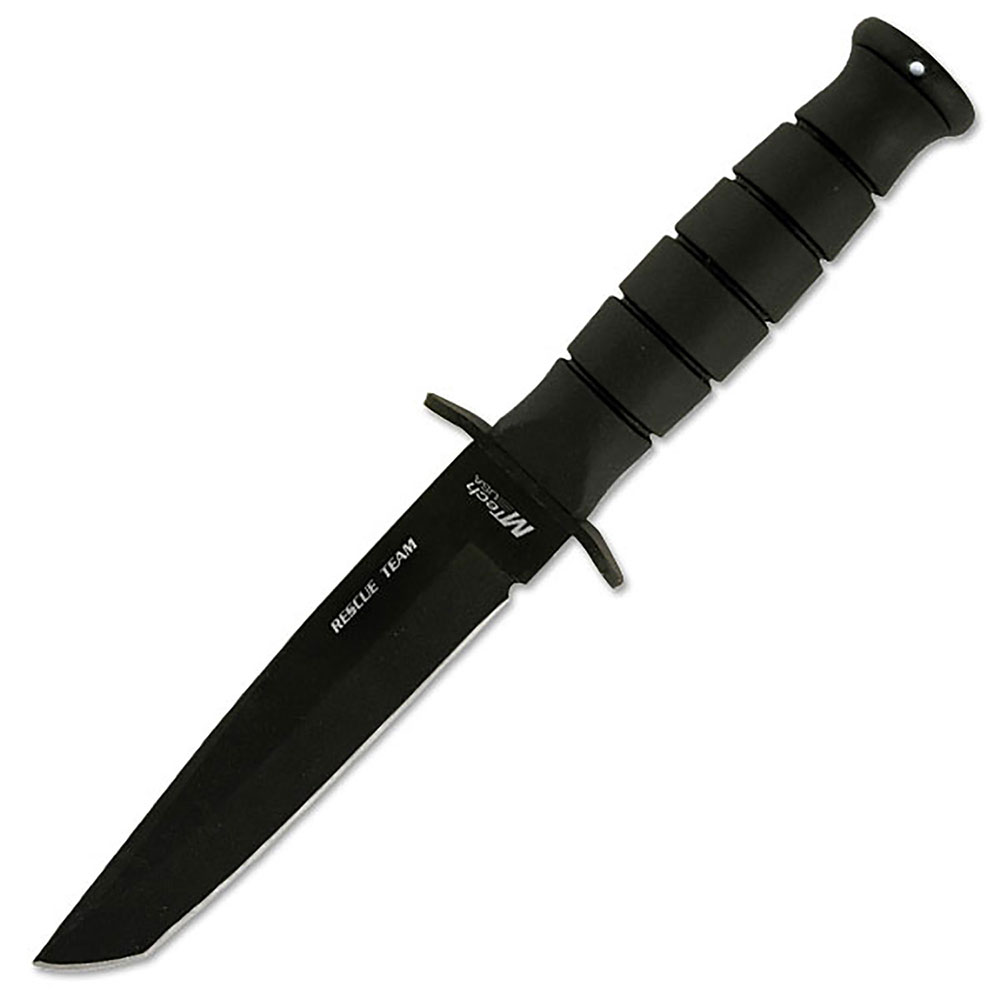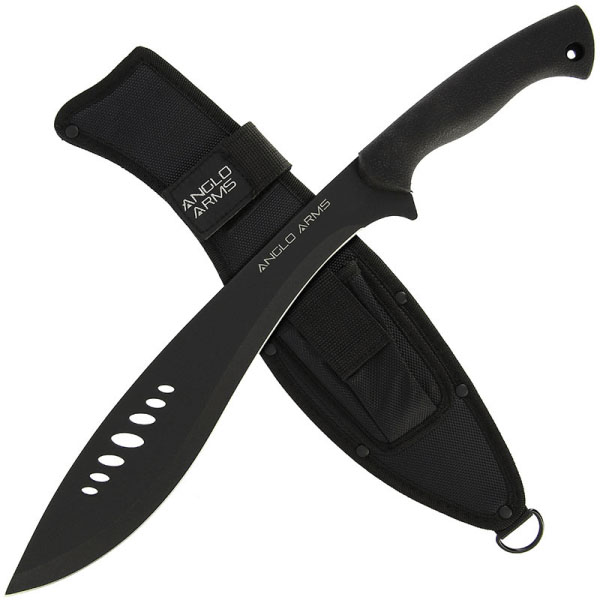Knives and Tools.. Knives are tools!
Not many people actually stop to think about what a knife is or more generally what knives are. Sure, they look scary in the media, can be used and abused just like any other object; but at their core a knife is just a tool. In fact, you could say they are the most fundamental of tools, going back to the stone age with sharp rocks and pointy bones.
Realistically, a knife is what you make of it, and here at Knife Warehouse we sell them for what they really are. One of the most singularly useful items a person can own! You can open your mail, cut your food, sharpen pencils, free a stuck animal and a huge range of other things too.
Types of Knives
It’s important you choose the right knife for the job. A huge fixed blade is going to be of no use in a precision task, and a tiny knife won’t help you fell a small tree. So what are the types of knives we stock here at Knife Warehouse?
Lock Knives
The bread and butter general purpose knife. A lock knife is the go to for daily use. They consist of a blade, a locking mechanism and a handle. The blade will pivot around a small screw or ‘pillar’ and lock in place thanks to a locking mechanism in the handle. The vast majority of these knives you’ll see in the UK are what’s known as ‘Linerlock’ knives.
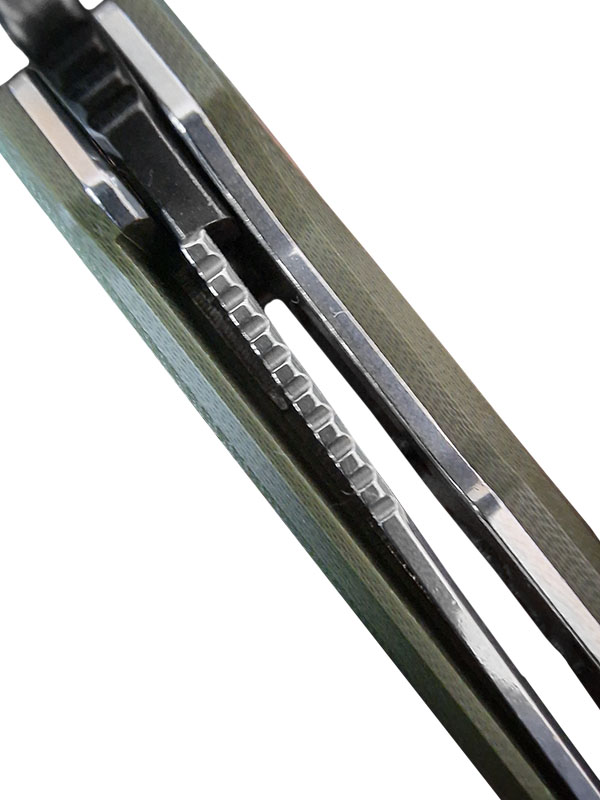
Linerlock Knives
A linerlock knife is locked in place by a section of the handle’s steel liner that bends into place under the blade. They’re very easy to use, and extremely reliable. Bonus, they’re cheap to manufacture which means that they can be picked up very inexpensively, this model for example is under £15! There are also much more expensive models available, as with all things, higher quality and better materials so there really is something for all budgets.
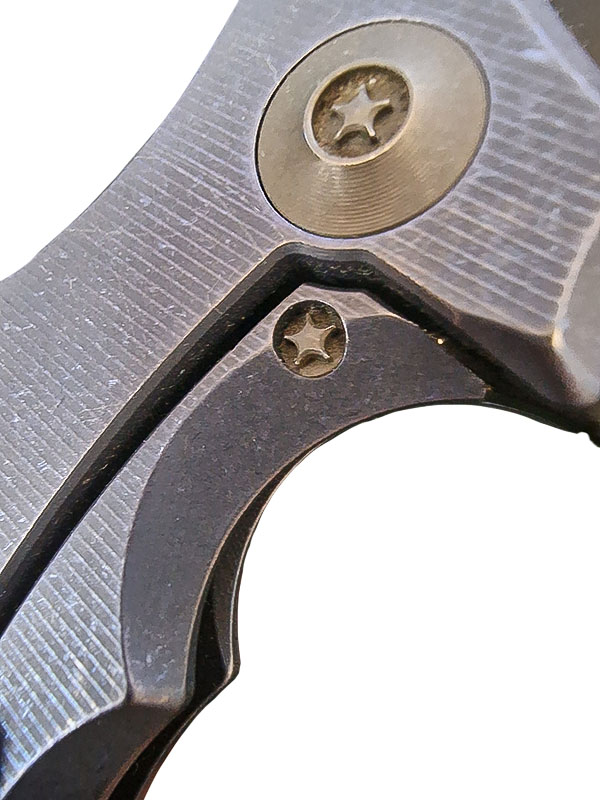
Framelock Knives
These knives are very similar to the ‘linerlock’ versions above, but instead of part of the handle ‘liner’ bending toward the blade locking it open, a section of the actual handle frame does instead. Just as reliable as the linerlock, ‘framelocks’ are often found on higher end knives more often than the cheaper equivalents.
Backlock Knives
‘Backlocks’ are where folding knives began! Before we had liners and frame locks, traditional lock knives would have a bar on the back / spine of the handle that would be pressed in to unlock the knife. Essentially moving part of the handle into a groove in the blade that locks or unlocks it in place.
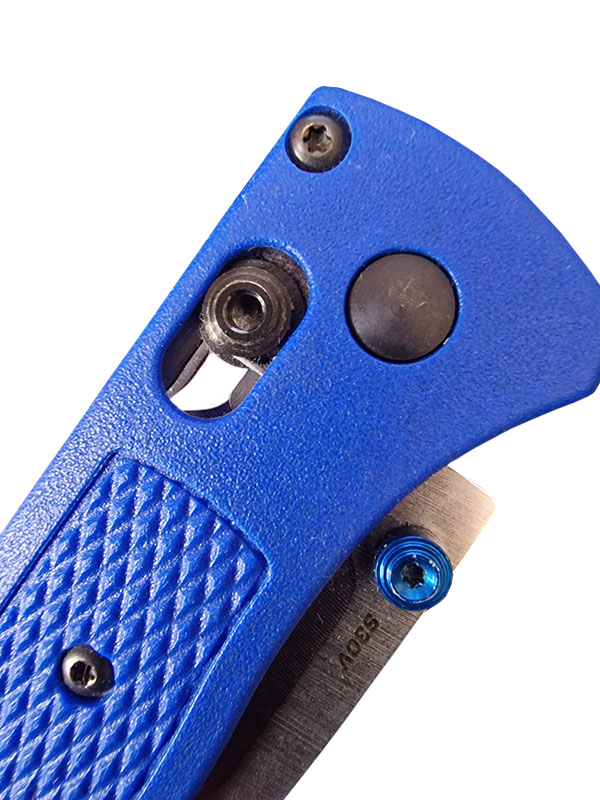
Bolt Lock Knives
Rarer still are the bolt locks. These knives features a much more intricate mechanism where a bolt in a groove that goes right the way through the handle fits into a slot in the blade. They are operated by the bolt being moved down toward the back end of the knife to disengage the lock. The company Benchmade are perhaps most well known for this type of lock.
Others
There are of course loads of other type of lock, such as the Cold Steel Tri-Ad or other branded options. We highly recommend you reach out to us here if you have something specific you’d like to learn about!
Fixed Blade Knives
Fixed blades, hunting knives or sheath knives as they’re often known are basically all the same thing. A knife blade that is fixed into the handle such that it doesn’t fold. They’re usually presented in a sheath, be it leather, kydex or nylon to keep the blade safe and rust free. These are the most rugged and durable as they have no moving parts, are simple to maintain and easy to sharpen.
Machetes
Machetes are fixed blade knives on steroids. They usually feature a substantially larger blade designed for much bigger jobs. Made famous by the multitude of jungle films, they are definitely best known as jungle or ‘brush’ clearing tools. Yet, you’ll often find them in the hands of a farmer clearing his fields or tending to his hedge rows.
They come in various styles too, from the easily recognisable Latin machete through to the Kukri knives made popular by the Ghurkha’s. A machete is often a good ‘do it all’ tool as they can do nearly all of the bigger cutting tasks, but a good machete is balanced and controllable enough to cope with the finer cuts too.
Swords
Swords really are quite self explanatory.. They’re just really big knives. Originally weapons of war, now they’re a collectors best friend. They come in all shapes and sizes, from Italian Long swords to ‘Ninja’ or ‘Samurai swords.
They can be complex or simple in design, with both ornate designs and basic functionality orientated themes. The Samurai sword being the standard sort after sword in the UK. Straight bladed swords are fully legal to own in private places, but curved swords over 50cm must be traditionally hand made to be legal. Factory made curved swords over 50cm are banned, which is a good thing in many ways as it means almost all the curved swords on the market today are of very high quality. Perfect for sword collectors!
Blade Shapes
Clip Point Knives
Clip point knives are maybe the most iconic blade style of all. So called because they look like a portion of the blade has been ‘clipped’ off forming an incredibly sharp point that makes an exceptionally useful fine work and piercing tool. Typically seen in larger fixed blade ‘Bowie’ knives, but is more often cropping up in folding knives too. Originally designed for hunting, now they make light work of day-to-day cutting, especially the finer delicate tasks.
Tanto Point Knives
Tanto’s were first mainstream in feudal Japan where it was both the type of point and the name of the smaller knife that the civilians would carry. Now they’re really only found on Japanese swords. Instead we have the Americanised Tanto, with which Cold Steel holds the claim to fame. They’re most known for having a pointy, but heavily reinforced tip that’s designed for piercing first. Cold Steel themselves often advertise them as being able to poke through sheet metal. Of course, we don’t recommend that. They’re easily identified thanks to the angular shape, they’re strong, and look great too.
Drop Point Knives
Drop point knives are your ideal middle ground knife. They feature strong points that aren’t as delicate as clipped point knives and can have a curved belly or straighter edge. Most often found on Every Day Carry (EDC) knives due to how non-offensive they look and how well balanced they are overall in usability. If in doubt, drop point it out!
Karambit Knives
Karambit knives originated in mushroom picking of all things. Since then they’d made their way into the ‘Silat’ martial art in particular, but are also right at home in the general use range of knives. Their defining feature is the downwards curved ‘talon’ like shape which makes them particularly suited to pulling cuts as the tip of the blade digs in continuously deeper as you go. Once you’ve opened a few boxes with one of these, you’ll never go back.
Spear Point Knives
Spear point knives a basically shrunken daggers, but with only one sharpened edge. They have a blade that tapers evenly to a point in the center and often feature a false edge on the back as well to further complete the dagger look. They’re very effective at piercing, but don’t really miss out on the other cutting tasks either. Quite a good all rounder for some.
Reverse Tanto Knives
Now we’re getting into the more exotic knife styles. Usually used because you like the shape as opposed to specific functionality. That said, they do have extremely delicate fine points so they are quite useful for equally delicate cuts. Quite a lot of modern high end folders feature this design as it’s unusual and fun to look at.
Every Day Carry – EDC
Is an philosophy of you’d rather have one and not need it, than need it, and not have one. The concept of keeping a knife with you at all times so that if the need arises, you can cut that box, you can cut your fishing line, or so that you can rescue a stuck animal!
It’s popular around the world, but in the UK there are some extra considerations.
UK EDC Knife Laws
You can’t carry any knife. There are some legal restrictions. For a knife to be carried in public without a specific realistic reason for needing it it must meet the following points.
- The knife must have a cutting edge of less then 3 inches.
- It must fold readily into the handle without disengaging a lock.
- It cannot be a fixed blade that doesn’t fold.
- It must not be on the ‘banned knives list. Available here.

